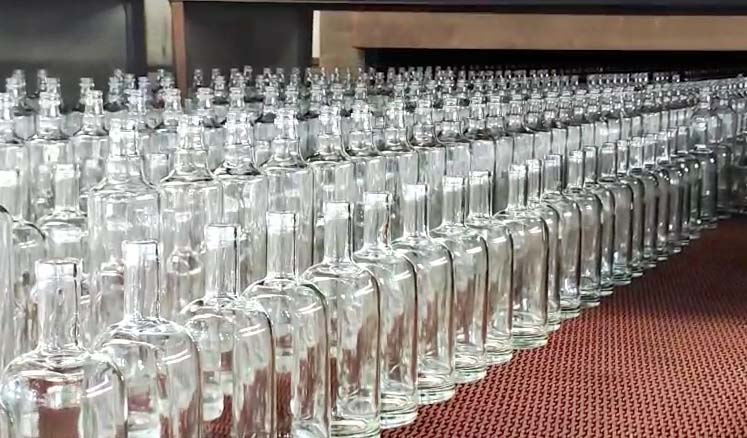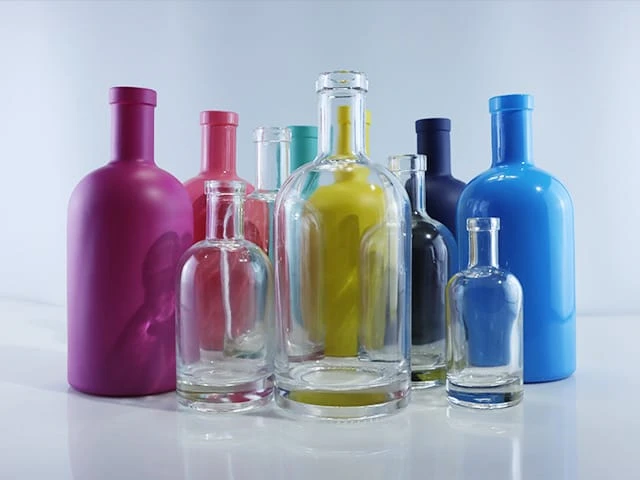Glass bottles are a premium choice for packaging beverages, spirits, wine, and other liquids due to their purity, sustainability, and aesthetic appeal. However, their fragile nature presents unique challenges during transportation. Ensuring the safe and efficient delivery of glass bottles requires strategic packaging, proper handling, and sustainability measures. In this comprehensive guide, we explore best practices for glass bottle transport, minimizing breakage risks, and sustainable logistics solutions to help businesses improve efficiency and reduce environmental impact.
Key Considerations for Transporting Glass Bottles
Transporting glass bottles requires meticulous planning to maintain product integrity. The following factors are crucial:
1. Protective Packaging
Proper packaging is the first line of defense against breakage. Key solutions include:
- Cardboard dividers and inserts: These provide individual compartments to prevent bottles from touching.
- Bubble wrap or foam sleeves: Wrapping bottles in protective layers absorbs shocks and vibrations.
- Palletization: Using pallets enhances stability and simplifies bulk transportation.
- Edge and corner protectors: Reinforce the edges of packages to prevent impact-related damage.
- Double-layered cartons: Extra-thick boxes offer added security for fragile glass shipments.
2. Load Stability
To prevent movement and breakage during transit:
- Use shrink wrap or straps to secure bottles on pallets.
- Optimize load distribution within trucks or containers.
- Avoid stacking bottles too high to prevent excessive pressure.
- Implement vibration-dampening measures to reduce movement during transport.
- Use air-ride suspension trucks for long-distance shipments to minimize shaking.
3. Handling Precautions
Improper handling can lead to damage. To mitigate risks:
- Train staff on careful handling techniques.
- Use forklifts or conveyor belts for bulk movements.
- Implement clear labeling indicating “Fragile” or “Handle with Care.”
- Establish strict loading and unloading procedures to minimize impact damage.
Best Packaging Materials for Glass Bottle Transport
Choosing the right packaging materials is essential for safe transportation:
- Corrugated cardboard boxes: Strong and recyclable, providing excellent protection.
- Molded pulp trays: Eco-friendly and cushioning.
- Air-filled packaging: Offers impact protection.
- Reusable crates: Sustainable for large-scale glass bottle shipments.
- Biodegradable cushioning materials: Reduce waste while maintaining high protection standards.
For customized packaging solutions that enhance brand image and safety, consider Valiant Glass, a leader in high-quality glass bottle manufacturing and customization.
How to Minimize the Risk of Breakage
Glass bottle breakage can lead to product loss and increased costs. Reduce risks with the following:
- Shock absorption: Foam inserts and air cushions absorb vibrations.
- Secure stacking: Ensure bottles remain upright and evenly spaced.
- Temperature regulation: Extreme temperatures can weaken glass. Insulated packaging is ideal for sensitive products like White Wine Bottles or Champagne Bottles.
- Humidity control: Excess moisture can weaken packaging materials, so climate-controlled storage and transport are recommended.
- Real-time tracking and monitoring: Smart sensors can detect and report changes in temperature, humidity, or impact force to prevent damage.
Sustainability in Glass Bottle Transport
Sustainability is a growing priority in logistics. Glass bottle transport can be made eco-friendly through:
1. Optimized Packaging
Using lightweight, recyclable materials reduces waste and emissions. Glass is 100% recyclable, making it a superior packaging choice.
2. Efficient Logistics
- Consolidate shipments to reduce transportation frequency.
- Plan routes strategically to lower fuel consumption and carbon footprint.
- Use electric or low-emission transport options where possible.
- Employ artificial intelligence (AI) logistics planning tools to maximize efficiency.
3. Returnable & Refillable Systems
Many companies are adopting returnable glass bottle systems to promote reuse. Brands using Whiskey Bottles and Vodka Bottles benefit from these sustainable programs.
4. Collaborative Initiatives
Partnerships between manufacturers, distributors, and retailers can optimize supply chain efficiency and minimize waste. Initiatives such as shared warehouse storage and combined shipments can help reduce transport costs and carbon emissions.
5. Eco-Friendly Transportation Methods
- Rail and sea freight: More sustainable than road transport for long-distance shipments.
- Hybrid and electric vehicles: Lower emissions and improve sustainability in last-mile delivery.
- Use of biofuels: A promising alternative to fossil fuels in reducing the carbon footprint of logistics.
Conclusion
Effective glass bottle transportation requires the right combination of protective packaging, secure handling, and sustainability-focused strategies. By implementing best practices, businesses can reduce breakage risks, enhance cost-efficiency, and contribute to environmental sustainability. Investing in innovative packaging solutions and sustainable transport practices not only ensures safe deliveries but also aligns with global eco-friendly initiatives.
For premium glass packaging solutions tailored to your needs, explore Valiant Glass – your trusted partner in high-quality glass bottle manufacturing and customization. Whether you’re looking for customized Spirits Bottles or sustainable packaging options, Valiant Glass is committed to providing top-tier solutions for all your glass packaging needs.
If you’re looking for more knowledge of glass bottles, check out the following articles:
– Top 4 Drinking Glass Manufacturers in the U.S
– Top 10 Glass Bottle Manufacturing Companies in India(Latest Updates)
– Top 10 Glass Bottle Manufacturers In The USA
– Why Choose Apple Juice in Small Glass Bottles? A Flavorful Experience
Consult Your Valiant Glass Bottles & Packaging Experts
We help you avoid the pitfalls to deliver the quality and value your glass bottle and jar need, on-time and on-budget.














